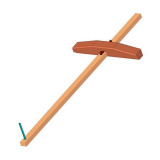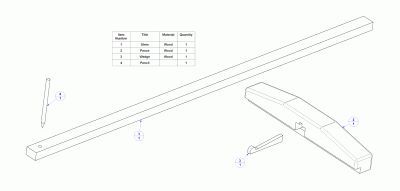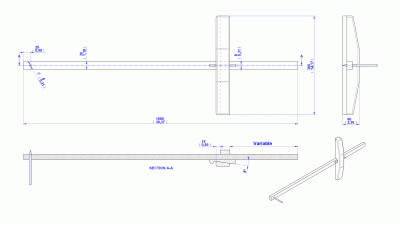On this page you can download free woodworking plan for making a panel gauge.
The panel gauge is used for making lines at a greater distance from the working edge. The stem and fence are longer than those of the marking gauge, but otherwise does not differ from the marking gauge. This is a large wooden gauge with a wide fence and a stem anything up to a metre long. Instead of the workpiece being marked with a metal spur, the stem carries a pencil, located in a hole at the one end. The fence and the stem are locked together by a wedge. This type of gauge is used for marking out wide panels of timber or plywood. The lower edge of the fence is rebated on one side, which helps to keep it firmly in contact with the edge of the board to be marked.

W 360mm (14.17'') x H 60mm (2.36'') x L 1000mm (39.37'')


As is the case with any other tool, hardwood is usually the best solution for the making of this panel gauge.
Using the Panel gauge
Set the distance between the pencil and the fence with a ruler. Tighten the fence by hitting the back of the wedge with a piece of wood or a small hammer. Loosen the fence by hitting the front of the wedge. More information: How to use marking gauge.
If you are interested in some additional information about using a panel gauge, take a look at our marking gauge woodworking plan, as these two tools are actually the same, only of different dimensions.